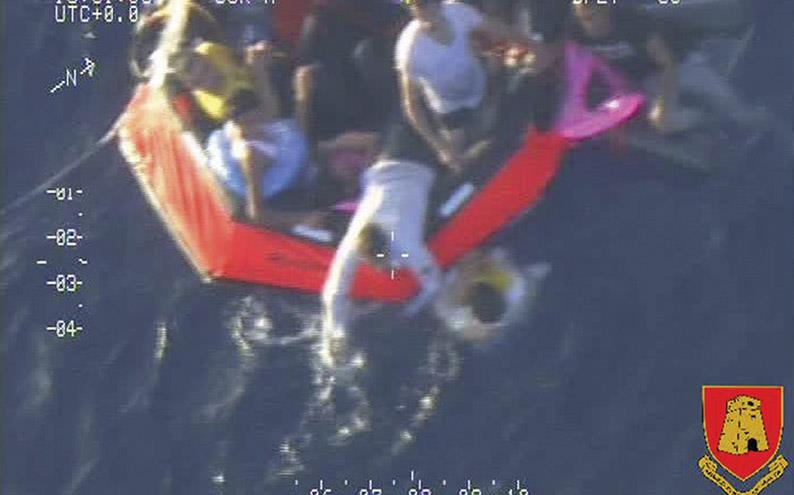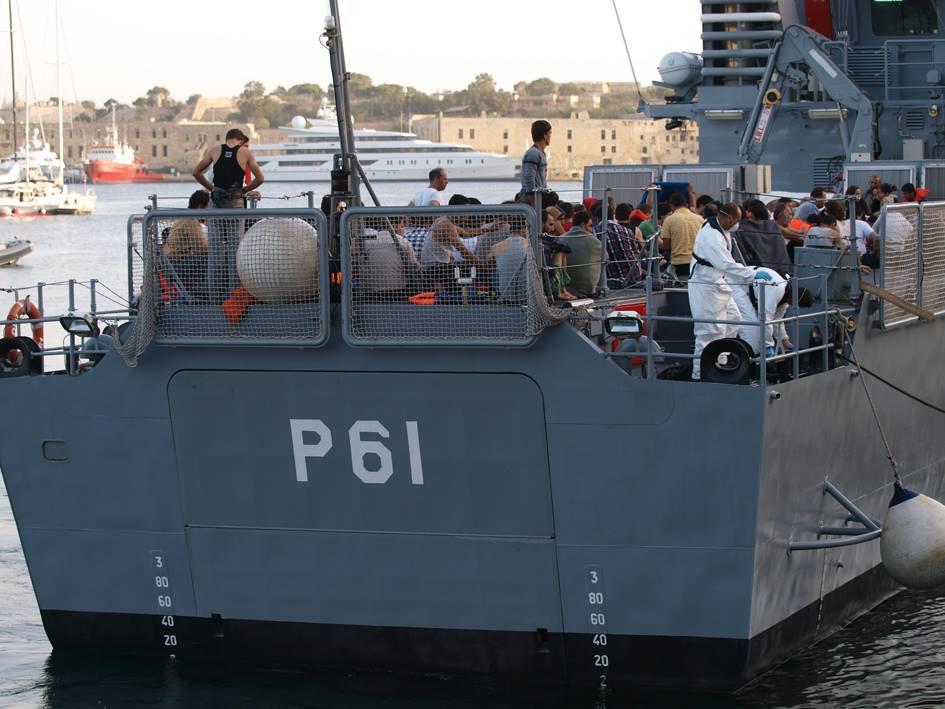One of the survivors of the 11 October Lampedusa tragedy is asking a prosecutor to establish who was responsible for the questionable rescue operation carried out by Maltese and Italian authorities just over a year ago. He is also asking why the Italian warship ITS Libra, which could have reached the sinking vessel several hours before the tragedy, was not dispatched to the site until after disaster struck.
The reqeust is being made by Dr Mohammad Jammo, 50, whose two young sons perished in the tragedy. Dr Jammo was the man who made the actual calls to Italy and Malta via satellite phone from the sinking boat.
Days after the tragedy, Dr Jammo was interviewed by L’Espresso journalist Fabrizio Gatti. The interview had revealed that Italy and Malta had “passed the buck of responsibility” for the rescue and several rescue units which were in the vicinity of the migrant boat were not dispatched to assist before the vessel capsized and sank, taking more than 260 men, women and children with it to the bottom of the sea.
He is making the request in a written statement, which he has delivered to an Italian embassy in Germany with the help of his lawyer, Alessandra Ballerini. A request was made for the statement to be delivered to the Prosecutor of Palermo, according to Italian news website Tiscali.

The fateful day of the voyage
In the document, Dr Jammo writes how on 10 October he boarded a boat from the Libyan port of Zuwara, along with his wife, five-year-old daughter and his sons; six-year-old Mohamand and nine-month-old Mahel. A few weeks before Dr Jammo was the Director of the Aleppo Hospital’s Intensive Therapy Unit but, like many other Syrian families had to flee the civil war gripping the country.
The Syrian medic recounted how a Libyan patrol boat which had followed their boat all night long opened fire and holed the old fishing vessel in several places below the waterline. Being one of the few who spoke good English, Dr Jammo was handed a satellite phone which he used to call the Italian authorities. “I spoke to a woman and told her that our boat was sinking and we needed urgent assistance. I told her there were at least 250 adults and 150 children. I gave her our exact position using the GPS set. The equipment showed us that, at that time we were some 100km away from Lampedusa and more than 200km away from Malta. That is why we called Italy.”
Jammo says help did not arrive. He called again and was passed over to someone else, a man, who then told him that he had to call the Maltese authorities. “I burst into tears and repeated that we were all going to die but the man just gave me the number for Malta and hung up.”

The satellite call to Malta
By now it was 1pm. Dr Jammo called Malta and repeated his frantic plea for help. “At 3pm the Maltese told us they knew where we were and said help would arrive within 45 minutes. By 4pm the promised help had not arrived. I phoned again and they said they needed another hour.”
At 5.07pm the boat capsized and sank. Many, including Jammo’s two sons, drowned. Their bodies would never be found.
A few days after the tragedy Dr Jammo was interviewed by journalist Fabrizio Gatti, who later established the sequence of events that took place on that fateful day. Admiral Felicio Angrisano confirmed much of Dr Jammo’s testimony, but most importantly he told Mr Gatti that Malta was informed of the case at 1pm. He also said the Maltese were informed that two merchant vessels and an Italian warship, the Libra, were in the vicinity. Gatti would later find out that at 1.34pm, the ITS Libra was only 27 miles away from the sinking boat and could have reached the scene by 3pm. For some reason it was instructed to go round in circles at a 5-knot speed and was only told to go to the rescue after the boat turned turtle. It eventually arrived on scene at 5.51pm, by which time many had died.

Where does the blame lie?
Who was ultimately responsible? the author asks. According to his lawyer, Alessandra Ballerini, the answer is simple. “All those who could have attempted the rescue. When human lives are in danger we cannot have a debate on who is more competent. It is a juridical duty, apart from a moral one to act without procrastination. The maritime code provides for criminal penalties when one does not fulfil his obligations at sea.”
Dr Jammo says he has not yet abandoned hope of understanding why his life, and those of many others aboard, was destroyed. The Syrian medic is convinced that little was needed to avoid the tragedy. That is why he is now asking the Prosecutor of Palermo to determine who was responsible. His statement asks in particular why the ITS Libra was not despatched on site immediately.
Over the months, The Malta Indpendent on Sunday has conducted its own investigation on the happenings of 11 October. It found that, after it was handed control of the situation, Malta had six options at its disposal. These included sending the ITS Libra to the rescue. There were also a number of merchant ships in the vicinity and at least five fast rescue boats anchored in Lampedusa. In the end, Malta chose to send the P61 patrol boat, which was farthest away. The Maltese vessel arrived on scene after the tragedy had unfolded. In the end, Malta and Italy saved 203 people. 32 bodies were recovered and about 260 others remain missing at sea.